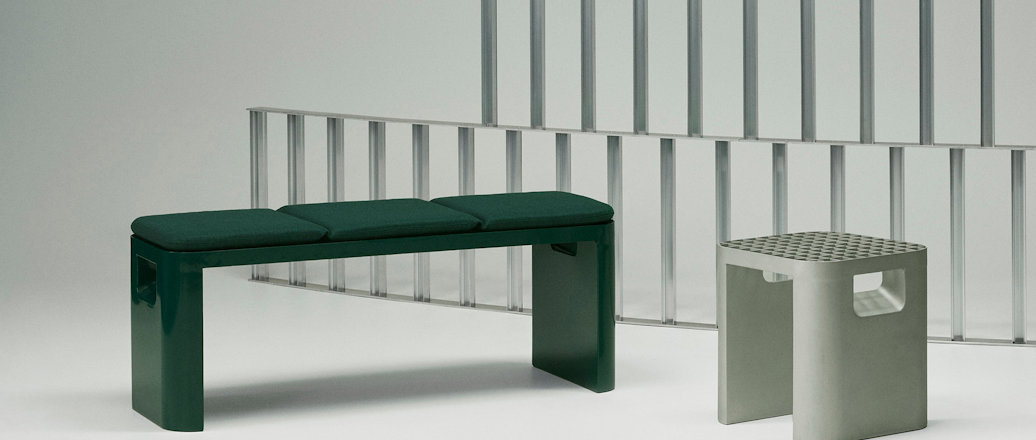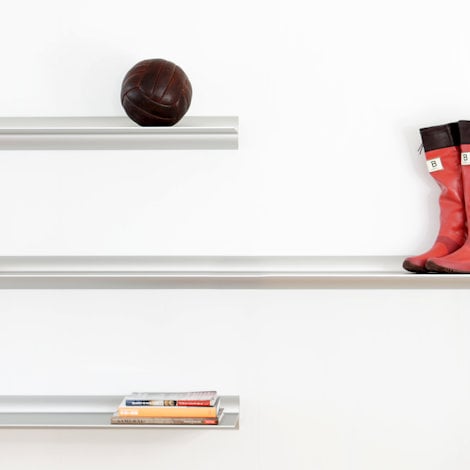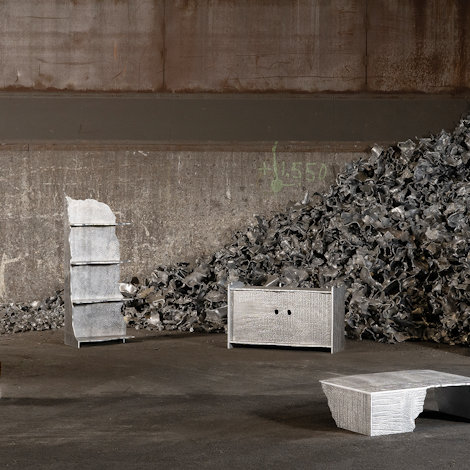How I can challenge the state of furniture design with the use of aluminium
As a product designer, I guess I am a rather traditional Scandinavian with regard to choosing materials. But then you have materials with certain inherent properties and qualities that tend to create their own pathways. And as I grow older, I enjoy letting go of my favored materials to make room for common sense. At times, using aluminium is common sense.
There is a variety of strong examples of tectonics to be found within architecture, showing how construction can be elevated to an art form. You can build airports out of cardboard, or a concrete church with a concave-shaped dome.
I keep returning to architecture when considering materials in a design process. Now and then, I also have architects and artists do product design. Minds that I see as protagonists within their own field. In a search for new bits of language, that can nudge the parameters just a tiny bit. With my own design working as a backdrop for the complexity added by others.
So, while anchored in traditional Scandinavian materials, I like challenging the obvious – when I have the chance.
This is how I tried to challenge myself when designing One stool and the Two bench, which we presented at Milano Design Week. With aluminium and its intriguing traits as the premise for the project.
Local competence and aluminium
These two pieces were born out of a wish to make use of local competence, as well as to see where aluminium lattice production could take me.
Here in Norway, a Trondheim-based metal workshop called Profi showed some really good reference work, and I decided that I wanted to do pure and fundamental product design. I wanted indoor/outdoor furniture that doesn't get wet. Soft and body friendly shapes, paired with good colors and surfaces.
It's very matter-of-fact. No details are amplified, and there are no more reductions to be done. I think.

Steering clear of trends, when possible
I’m usually influenced by spatial experiences or art, and try to stay clear of trends. At the same time, some trends are too strong to ignore, and you have to relate to them.
I try to look at composition and form in a rational way in my furniture designs. Where does the wear and tear occur? Who will be sitting on it, and when? Where do you put it? Pine can do a lot, but it is often surpassed by ash or oak. Aluminium can do most, but steel is needed when surroundings are too tough.
With furniture, you are usually working with moveable objects. Sometimes you put stuff on top of them. You have all these situations of interaction that generate sound and touch. And the sound of aluminum is a lot softer than that of steel. The same goes for touch. The two are sort of interconnected.
So sound and touch, as well as lightness and stiffness – everything that has to do with structure – are what attract me to aluminium, and what make aluminum a good choice.
Aluminium and environmental responsibility
It's tricky to be orthodox about sustainability when doing product design. As a rule, I manufacture locally as often as I can. Surface treatments are sparse, and materials are pure. More importantly, I do products I believe will keep adding to their surroundings, in low volumes, and with a quality that ages well.
Recycling is another aspect, and yes, you should design for recyclability because you can at the moment. And when it comes to aluminium, you have a material that you can recycle endlessly. That's the wonderful thing and you have to embrace that. The benefits are huge, and I try to choose aluminium as often as I can.








